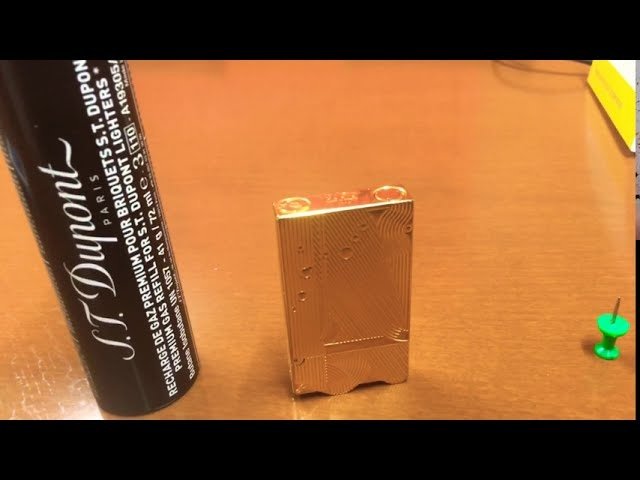Are you tired of constantly buying new lighters every time your trusty old one runs out of fuel? Look no further! In this blog post, We will guide you through the simple steps to refill your Sanji lighter and save yourself some money in the process. With just a few supplies and a little know-how, you’ll be back to lighting up with ease in no time. So grab your Sanji lighter and let’s get started on this refilling adventure!
Gather Your Supplies
Before you begin the process of refilling your Sanji lighter, it’s important to gather all the necessary supplies. This will ensure that you have everything you need within arm’s reach and make the process much smoother.
You’ll need a can of butane gas. Make sure to choose a reputable brand to ensure quality and safety. You can usually find these cans at convenience stores or online.
Next, grab a small screwdriver or similar tool that will allow you to access the fuel chamber of your Sanji lighter. Different lighters may require different types of tools, so be sure to check what is needed for your specific model.
Additionally, having a pair of gloves handy is always a good idea when working with flammable substances like butane gas. This will protect your hands from any potential leaks or spills during the refilling process.
Have some paper towels or a cloth nearby in case there are any drips or spills while refilling. It’s always better to be prepared than dealing with unexpected messes later on!
With these supplies gathered and ready, you’re now well-prepared for successfully refilling your Sanji lighter without any hiccups along the way!
Prepare Your Lighter
Before refilling your Sanji lighter, it’s important to properly prepare it. This will ensure a smooth and successful refill process.
First, make sure that your lighter is completely empty of any remaining fuel. You can do this by igniting the flame until there is no more fuel left. This step is crucial because if there is still fuel in the lighter, it may leak or cause other issues when you try to refill it.
Next, locate the refill valve on your Sanji lighter. Typically, this valve can be found on the bottom of the lighter or sometimes on the side. It may be a small hole with a screw-like mechanism or a rubber seal covering the opening.
Once you have located the refill valve, take a moment to inspect it for any dirt or debris that may be blocking it. If necessary, use a small brush or toothpick to gently clean out any obstructions.
Now that your Sanji lighter is empty and free from debris, you are ready to proceed with refilling it. But before we dive into that process further — let’s briefly discuss what type of fuel you should use in your lighter.
Sanji lighters are designed to work best with butane gas as their fuel source. Butane gas provides a clean burn and ensures reliable ignition every time you use your lighter.
In order to avoid potential damage or malfunctioning of your Sanji lighter, always choose high-quality butane gas specifically made for lighters rather than using alternative fuels such as propane or gasoline which could lead to hazardous situations.
Remember that safety should always come first when handling flammable substances like butane gas! Make sure you are working in a well-ventilated area away from open flames and follow all manufacturer instructions carefully during every step of refilling process!
By following these preparation steps for your Sanji lighter before refilling it – ensuring its emptiness and cleanliness – you’ll set yourself up for a successful and hassle-free refill experience. So let’s move on to
Refill the Lighter
Refilling your Sanji lighter is a straightforward process that can help you save money and keep your favorite lighter working properly. To refill the lighter, you will need to gather a few supplies and follow some simple steps.
First, make sure you have the correct type of butane fuel for your Sanji lighter. It’s important to use high-quality butane fuel to avoid any issues with the functionality of your lighter. Once you have the right fuel on hand, locate the refill valve on the bottom of your Sanji lighter.
Before refilling, it’s important to prepare your lighter by purging any remaining gas from its tank. This can be done by pressing down on the refill valve with a small screwdriver or similar tool until all gas has been released. This step ensures that there is no residual pressure in the tank before refilling.
Check for Leaks
Once you have refilled your Sanji lighter, it’s important to check for any potential leaks. This step is crucial in ensuring the safety and functionality of your lighter.
To begin, inspect the exterior of the lighter for any signs of leakage. Look closely at the refill valve and surrounding areas for any residue or wetness. If you notice anything unusual, such as a small pool of fuel or a strong odor, there may be a leak present.
Next, perform a leak test by igniting the flame and observing its behavior. A well-functioning lighter should produce a steady flame without flickering or sputtering. If you notice erratic flames or hear hissing sounds while using the lighter, it could indicate a gas leak.
Another method to check for leaks is by submerging your lighter in water (without activating the flame). If bubbles appear around certain areas of the lighter when submerged, it suggests that there may be an air leak.
If you discover any leaks during these tests, it’s important to stop using the lighter immediately and address the issue before attempting to refill it again. Leaking lighters can pose serious safety hazards if not properly repaired or replaced.
Remember that regular maintenance and inspections are essential in keeping your Sanji lighter in optimal condition. By following these steps and checking for leaks after each refill, you can enjoy safe and reliable use from your trusty companion!
Test Your Lighter
Now that you’ve refilled your Sanji lighter, it’s time to make sure it’s working properly. Testing your lighter is an important step to ensure that it ignites consistently and doesn’t have any leaks. Here are some simple steps to test your lighter:
1. Check the Flame: Press the ignition button and observe the flame. It should be a steady blue flame without any flickering or sputtering. If the flame is weak or uneven, there may be a problem with the fuel flow.
2. Adjust the Flame Height: Most Sanji lighters allow you to adjust the height of the flame using a small screwdriver or knob located near the bottom of the lighter. Turn it clockwise to increase the height and counterclockwise to decrease it.
3. Test Multiple Ignitions: Try igniting your lighter several times in quick succession. This will help determine if there are any issues with consistent ignition.
4. Listen for Hissing Sounds: While testing, listen carefully for any hissing sounds coming from your lighter. A hissing sound could indicate a gas leak, which needs immediate attention.
5. Inspect for Gas Smell: Take a sniff near your lighter after each ignition attempt (without inhaling too closely!). If you notice a strong smell of gas, this may also indicate a leak.
Remember, safety should always come first when handling lighters or any flammable materials! If you suspect there is something wrong with your Sanji lighter during testing, do not continue using it until you can address and resolve any potential issues.
Conclusion
Maintaining and refilling your Sanji lighter is a simple process that can extend the lifespan of your favorite accessory. By following the steps outlined in this guide, you can ensure that your lighter remains reliable and ready to use whenever you need it.
Remember to gather all the necessary supplies before starting the refill process. Clear any debris or residue from the lighter’s fuel chamber and make sure it is completely dry. Use high-quality butane fuel for optimal performance.
Refilling your Sanji lighter involves inserting the nozzle of the butane fuel canister into the valve at the bottom of the lighter and filling it slowly until it reaches capacity. Be careful not to overfill, as this can cause leaks or damage.
Checking for leaks is an essential step to guarantee safety and functionality. Apply a small amount of soapy water around all connections and valves, then observe if any bubbles form. If there are no leaks detected, proceed with testing your lighter.
To test your Sanji lighter, ignite it several times using caution while observing its flame quality and consistency. A well-refilled lightershould produce a steady flame without flickering or sputtering.
By regularly maintaining and refilling your Sanji lighter, you’ll enjoy many years of reliable service from this handy tool. Remember to exercise caution when handling flammable materials such as butane fuel, ensuring proper ventilation during use.

